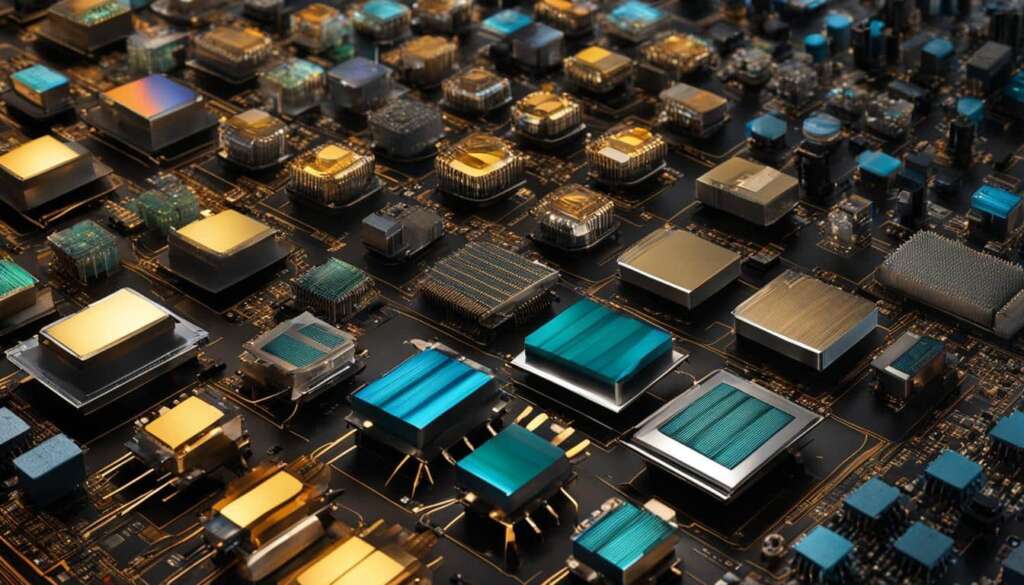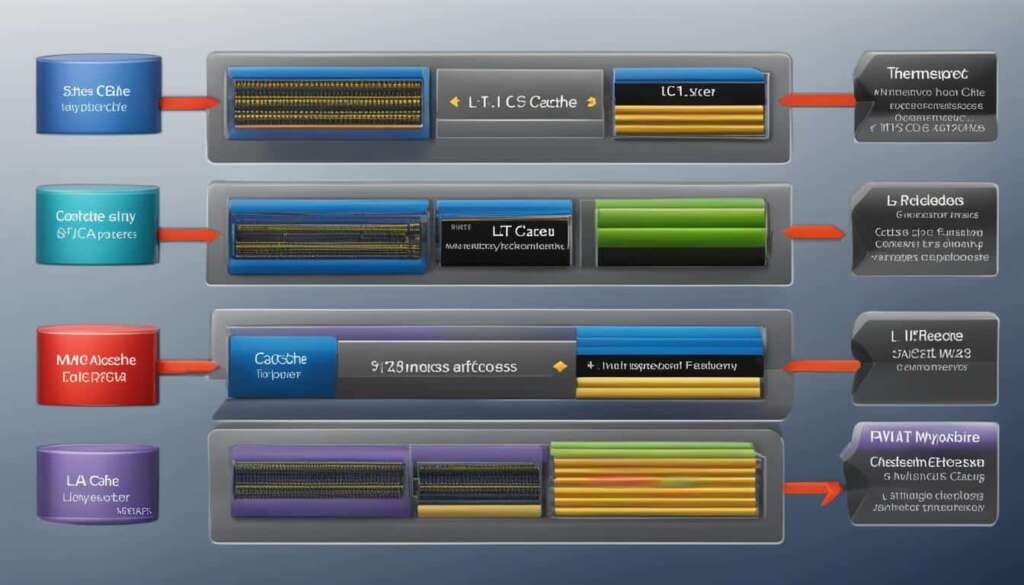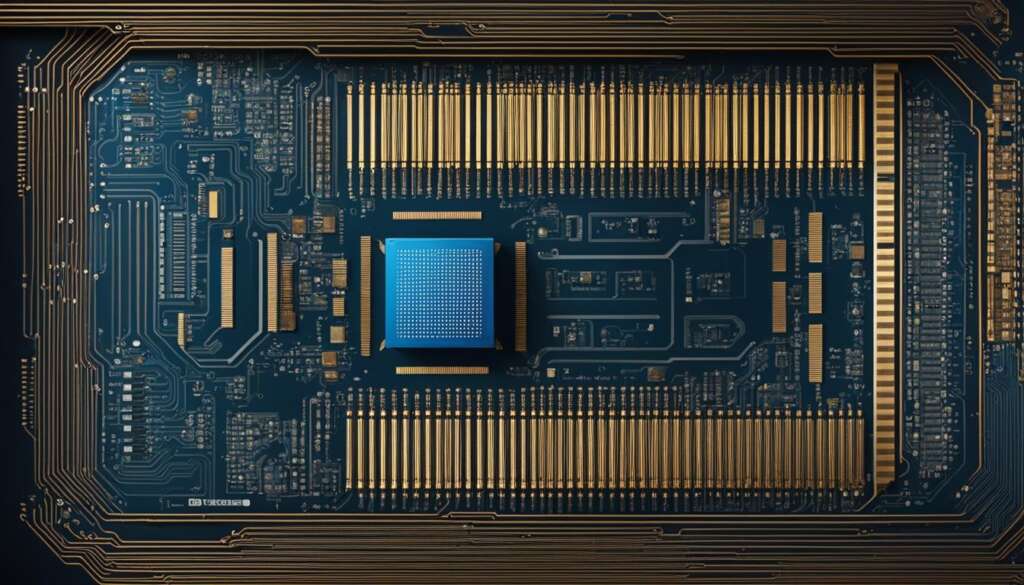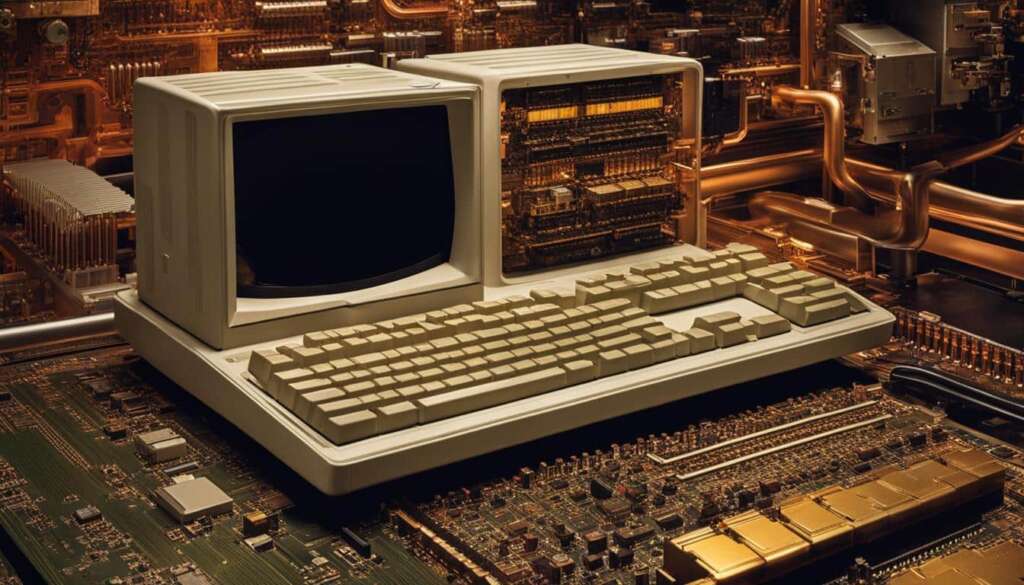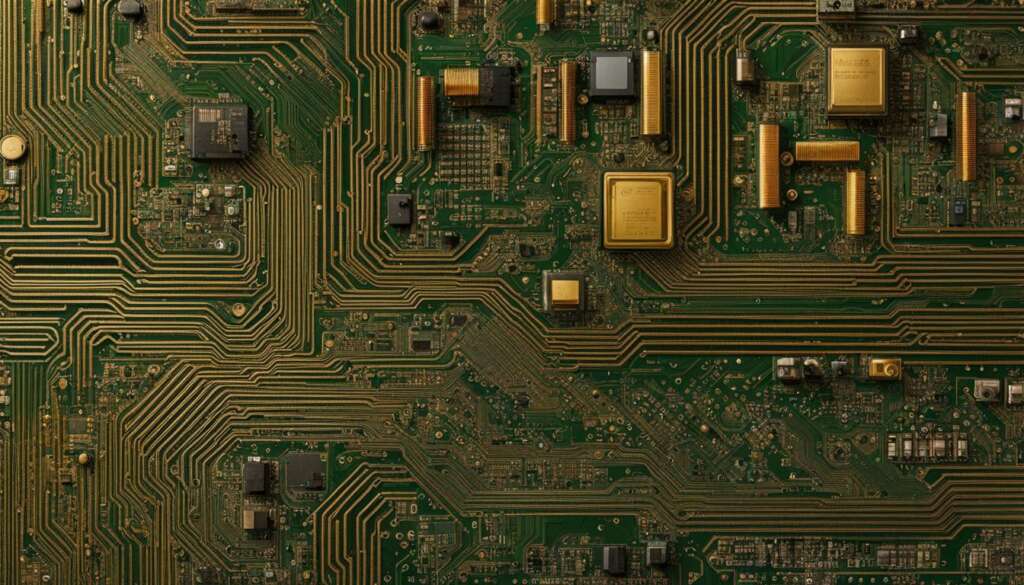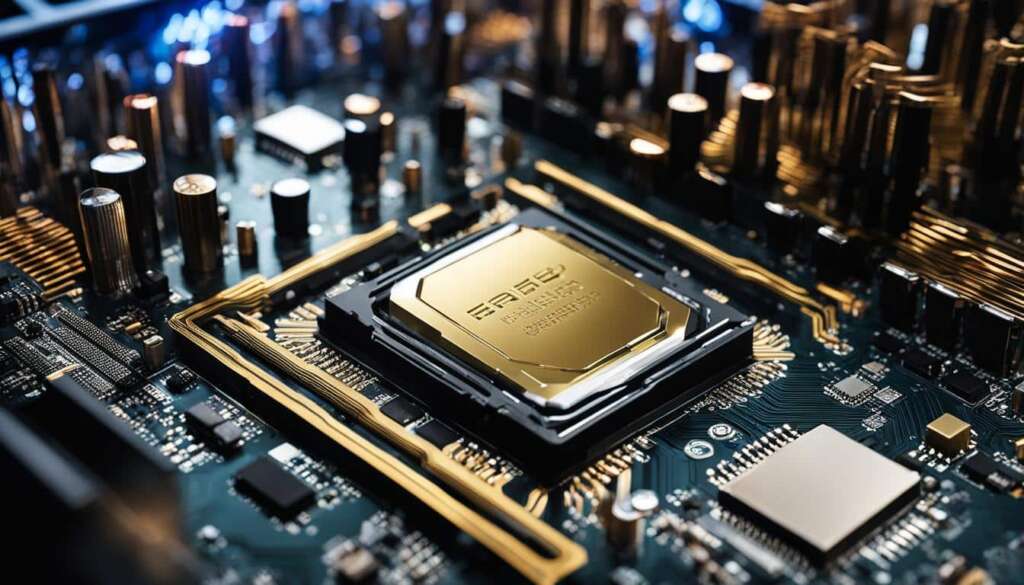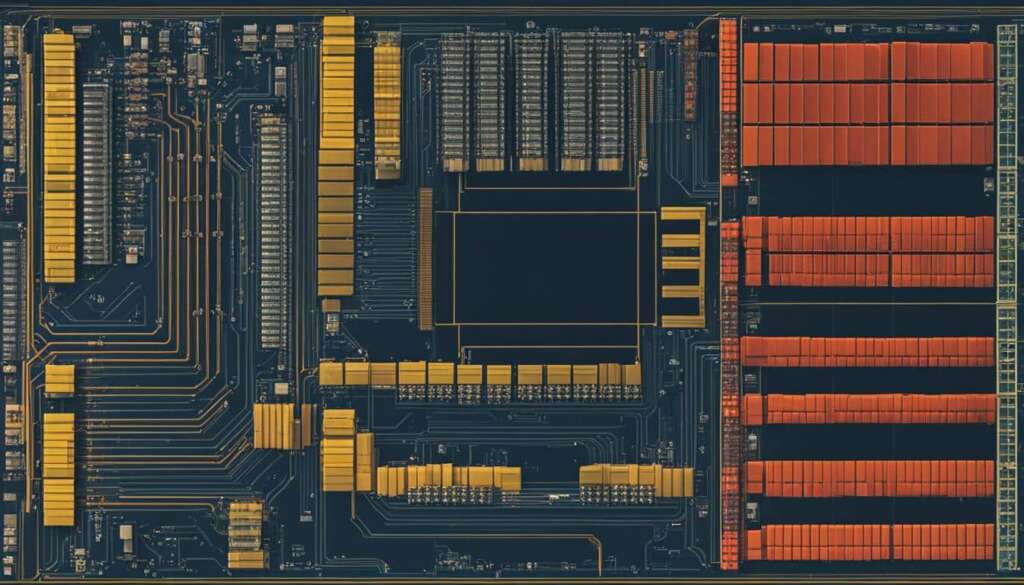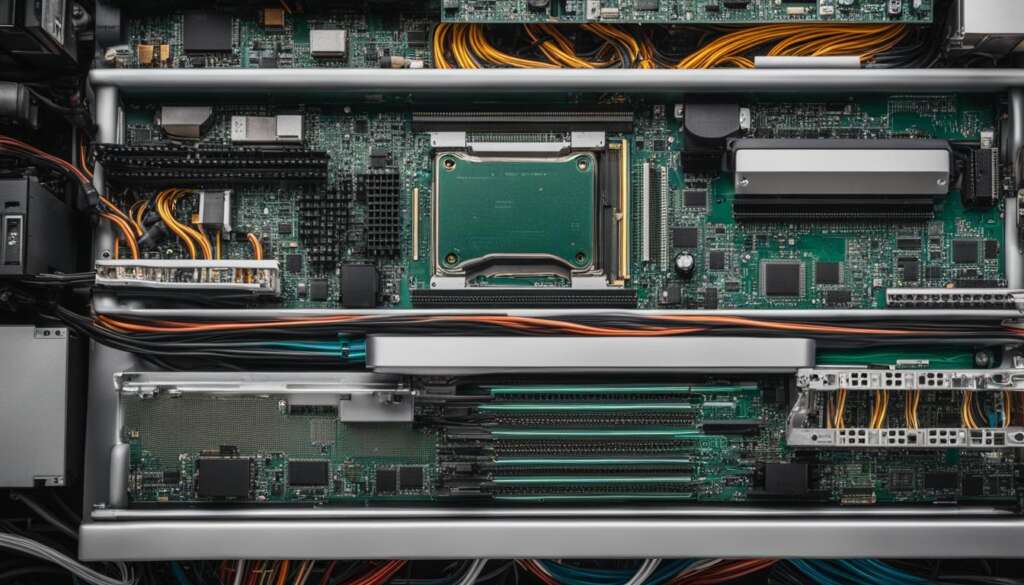Table of Contents
Welcome to our article on the significance of 64-bit architecture in modern computing. In this section, we will explore the benefits of 64-bit architecture, as well as the differences between 64-bit and 32-bit systems.
When it comes to computing, 64-bit architecture offers numerous advantages over its 32-bit counterpart. A 64-bit processor is capable of processing data and instructions in larger chunks, allowing for faster calculations and improved performance.
One of the key advantages of 64-bit architecture is the larger addressable memory space it provides. This means that 64-bit systems can execute large and complex software programs with ease, making them ideal for tasks such as computer-aided design, database management systems, and scientific applications.
Furthermore, 64-bit processors can handle more data and instructions per unit of time, resulting in better overall performance. This increased processing power enables more detailed data representation and better efficiency when moving data.
However, it’s important to consider the limitations and industry catch-up when transitioning to 64-bit architecture. Compatibility with existing hardware and software may need to be addressed, and memory waste can be a concern.
In the next sections, we will delve deeper into understanding 64-bit processors, the advantages of 64-bit computing, compatibility with operating systems and software, and much more. So, stay tuned for a comprehensive exploration of the world of 64-bit architecture!
Understanding 64-bit Processors
A 64-bit processor is a fundamental component of modern computing systems. It utilizes internal registers that are 64 bits wide, allowing for the handling of a larger volume of data and instructions per unit of time. The wider bus width of a 64-bit processor enables faster system clock speeds, hyper-threading, larger internal cache, and advanced instruction sets. These enhancements contribute to improved performance and the ability to handle complex computing tasks efficiently.
The most significant advantage of a 64-bit processor is its larger addressable memory space. This means that it can execute large and complex software programs, making it ideal for applications such as computer-aided design, scientific simulations, and database management systems. The increased memory capacity allows for the deployment of multiple simultaneous virtual machines and logical virtualization, enhancing the system’s overall versatility.
Furthermore, 64-bit processors offer compatibility with both 32-bit and 64-bit software. While a 32-bit application can function on a 64-bit platform, the full potential of the 64-bit architecture can only be leveraged with a suitable 64-bit operating system. It’s worth noting that some compatibility issues may arise with 32-bit drivers and applications that rely on specific 32-bit processor instructions or code. However, most hardware devices have both 32-bit and 64-bit driver versions available, ensuring compatibility with different operating systems.
Advantages of 64-bit Processors:
- Enhanced performance due to faster system clock speeds and advanced instruction sets
- Larger addressable memory space for executing large and complex software programs
- Compatibility with both 32-bit and 64-bit software
- Ability to handle multiple simultaneous virtual machines and logical virtualization
The table below provides a summary of the advantages of 64-bit processors:
| Advantage | Description |
|---|---|
| Enhanced Performance | Faster system clock speeds and advanced instruction sets contribute to improved performance. |
| Larger Addressable Memory Space | 64-bit processors can execute large and complex software programs due to their increased memory capacity. |
| Compatibility | 64-bit processors support both 32-bit and 64-bit software, ensuring compatibility with a wide range of applications. |
| Virtualization | These processors can handle multiple simultaneous virtual machines and logical virtualization, enhancing system versatility. |
In summary, 64-bit processors play a crucial role in modern computing by offering enhanced performance, a larger addressable memory space, and compatibility with both 32-bit and 64-bit software. Their ability to handle complex computations efficiently makes them ideal for a wide range of applications. However, potential compatibility issues with 32-bit drivers and applications should be considered, and the utilization of the full capabilities of 64-bit processors may require suitable 64-bit operating systems.
Advantages of 64-bit Computing
64-bit computing offers numerous advantages that contribute to its widespread adoption in modern systems. Here are some key benefits:
1. Enhanced Performance
One of the significant advantages of 64-bit computing is its ability to handle a larger volume of data and instructions per unit of time. This leads to improved performance, allowing for faster processing and execution of tasks. The larger addressable memory space provided by 64-bit processors enables the execution of large, complex software programs, making it ideal for resource-intensive applications like computer-aided design, database management systems, and scientific simulations.
2. Simultaneous Virtualization
The larger memory space of 64-bit systems allows for the deployment of multiple simultaneous virtual machines, enabling efficient virtualization. This means that different operating systems or software can run concurrently on the same hardware, maximizing resource utilization and flexibility.
3. Detailed Data Representation
64-bit computing allows for the manipulation of more detailed data, providing higher precision in data representation. This is particularly valuable for tasks that involve complex data sets, such as visualizing scientific or financial data. The increased data resolution enhances the accuracy and quality of analysis and simulations.
| Advantages of 64-bit Computing |
|---|
| Enhanced performance |
| Simultaneous virtualization |
| Detailed data representation |
The table summarizes the advantages of 64-bit computing, highlighting its improved performance, simultaneous virtualization capability, and ability to handle detailed data representation.
In conclusion, 64-bit computing offers significant advantages over its 32-bit counterpart, including enhanced performance, simultaneous virtualization, and detailed data representation. These benefits make it a crucial technology for demanding applications that require efficient processing, extensive memory access, and accurate data representation.
64-bit Operating Systems and Compatibility
A crucial aspect of understanding the significance of 64-bit architecture in modern computing lies in the compatibility of 64-bit processors with operating systems. These processors have the ability to run both 32-bit and 64-bit operating systems, but it is important to note that the advanced features and performance of a 64-bit processor can only be fully utilized with a suitable 64-bit operating system.
While most 32-bit applications can function on a 64-bit processor and operating system, there may be compatibility issues with 32-bit drivers and applications that rely on specific 32-bit processor instructions or code. It is worth mentioning that most hardware devices have both 32-bit and 64-bit driver versions available, ensuring compatibility with different operating systems.
To provide a better understanding, the table below illustrates the compatibility of 64-bit processors with various operating systems:

As shown in the table, 64-bit processors are compatible with a wide range of operating systems, including Windows, macOS, and Linux. This compatibility allows users to take advantage of the benefits offered by 64-bit architecture while still being able to use existing software and hardware.
In summary, while 64-bit processors can run both 32-bit and 64-bit operating systems, it is recommended to use a 64-bit operating system to fully leverage the advanced features and performance capabilities of these processors. This ensures compatibility with 64-bit software and drivers, providing an optimal computing experience.
Reasons to Choose 64-bit Architecture
When considering the architecture for your computing needs, there are several compelling reasons to choose 64-bit architecture. Whether you are a business owner, a professional in a specialized industry, or simply a power user seeking optimal performance, 64-bit architecture offers distinct advantages that can enhance your computing experience.
Enhanced Performance
One of the primary reasons to choose 64-bit architecture is its ability to handle larger and more complex software programs. With a larger addressable memory space, 64-bit processors can execute tasks that require substantial computational power, such as computer-aided design, database management systems, and scientific applications. The increased processing power allows for more efficient data handling and better performance, making it an ideal choice for resource-intensive tasks.
Compatibility with Existing Software
Transitioning to a new architecture can be a daunting task, but one of the advantages of 64-bit architecture is its compatibility with both 32-bit and 64-bit applications. Most 32-bit software can function seamlessly on a 64-bit platform, ensuring that you can continue to use your existing software without the need for significant changes or replacements. This compatibility allows for a smooth transition, enabling you to take advantage of the benefits of 64-bit architecture while maintaining compatibility with legacy systems.
Future-Proofing Your System
Choosing 64-bit architecture is also a way to future-proof your system. As technology continues to advance, more software and applications will be designed to take advantage of the capabilities of 64-bit processors. By adopting 64-bit architecture now, you can ensure that your system remains compatible with future software updates and advancements, prolonging the lifespan of your hardware investment.
| Reasons to Choose 64-bit Architecture: |
|---|
| Enhanced Performance |
| Compatibility with Existing Software |
| Future-Proofing Your System |
These are just a few of the reasons why 64-bit architecture is a compelling choice for modern computing. Whether you’re seeking increased performance, compatibility with existing software, or future-proofing your system, 64-bit architecture offers a range of benefits that can elevate your computing experience to new heights.
Difference Between 64-bit and 32-bit Architecture
The difference between 64-bit and 32-bit architecture lies primarily in the bus width of their processors. While 32-bit processors have a narrower bus width, 64-bit processors have a wider bus width, allowing them to handle more data and instructions per unit of time. This translates to better performance and the ability to execute larger and more complex software programs.
One of the main advantages of 64-bit architecture is the larger addressable memory space it offers. This is particularly beneficial for tasks that involve handling enormous data sets, such as computer-aided design, database management systems, and scientific applications. Additionally, 64-bit processors can provide more detail in 64-bit data, allowing for greater precision when working with complex data sets.
“The wider bus width of 64-bit processors enables them to handle more data and instructions per unit of time, resulting in improved performance and the execution of larger software programs.”
On the other hand, 32-bit processors have a smaller addressable memory space and a narrower bus width. While they can still function on a 64-bit platform, there may be compatibility issues with 32-bit drivers and applications that rely on specific 32-bit processor instructions or code. However, most hardware devices have both 32-bit and 64-bit driver versions available, ensuring compatibility with different operating systems.
| 64-bit Architecture | 32-bit Architecture |
|---|---|
| Wider bus width | Narrower bus width |
| Larger addressable memory space | Smaller addressable memory space |
| Ability to handle more data and instructions per unit of time | Lesser capacity for data and instructions per unit of time |
| More detail in 64-bit data | Limited detail in data |
Overall, the difference between 64-bit and 32-bit architecture lies in their capabilities and performance. 64-bit architecture offers a wider bus width, larger addressable memory space, and better performance, making it suitable for tasks that require handling large data sets and executing complex software programs.
Benefits of 64-bit Software Compatibility
One of the key advantages of 64-bit architecture is its software compatibility, allowing for the use of both 32-bit and 64-bit applications on a 64-bit processor and operating system. This compatibility ensures that existing software can be utilized without the need for significant changes or replacements. Most 32-bit applications can function properly on a 64-bit platform, with updates and patches available to ensure compatibility with 64-bit software versions. This seamless transition enables businesses and individuals to leverage the benefits of 64-bit architecture while still utilizing their existing software infrastructure.
64-bit software compatibility opens up a world of possibilities. It allows users to take advantage of the larger addressable memory space offered by 64-bit processors, enabling the execution of large and complex software programs that use enormous data sets. This is particularly beneficial for industries that rely on resource-intensive applications, such as computer-aided design, database management systems, and scientific research. By harnessing the power of 64-bit architecture, these industries can experience enhanced performance and productivity, leading to more efficient workflows and better results.
Furthermore, the compatibility between 32-bit and 64-bit environments ensures a smooth transition to 64-bit architecture. Businesses and individuals can continue to use their existing hardware and software while gradually adopting 64-bit technology. This eliminates the need for costly and time-consuming upgrades, allowing for a more gradual and cost-effective migration process. The ability to maintain compatibility with legacy systems and applications is crucial, especially for organizations that heavily rely on specialized software or have a complex IT infrastructure.
Benefits of 64-bit Software Compatibility:
- Utilization of existing software infrastructure
- Seamless integration with 32-bit applications
- Access to a larger addressable memory space
- Improved performance for resource-intensive applications
- Gradual migration process without disrupting operations
In conclusion, the 64-bit software compatibility of 64-bit architecture provides numerous benefits. It allows for the utilization of existing software, seamless integration with 32-bit applications, and access to a larger addressable memory space. This compatibility is particularly advantageous for industries that require resource-intensive applications, offering improved performance and productivity. Additionally, it enables a smooth transition to 64-bit architecture without disrupting operations. The benefits of 64-bit software compatibility make it a compelling choice for businesses and individuals looking to harness the power of modern computing.
| Benefits of 64-bit Software Compatibility |
|---|
| Utilization of existing software infrastructure |
| Seamless integration with 32-bit applications |
| Access to a larger addressable memory space |
| Improved performance for resource-intensive applications |
| Gradual migration process without disrupting operations |
Note: The table showcases the benefits of 64-bit software compatibility, highlighting the advantages it brings to users.
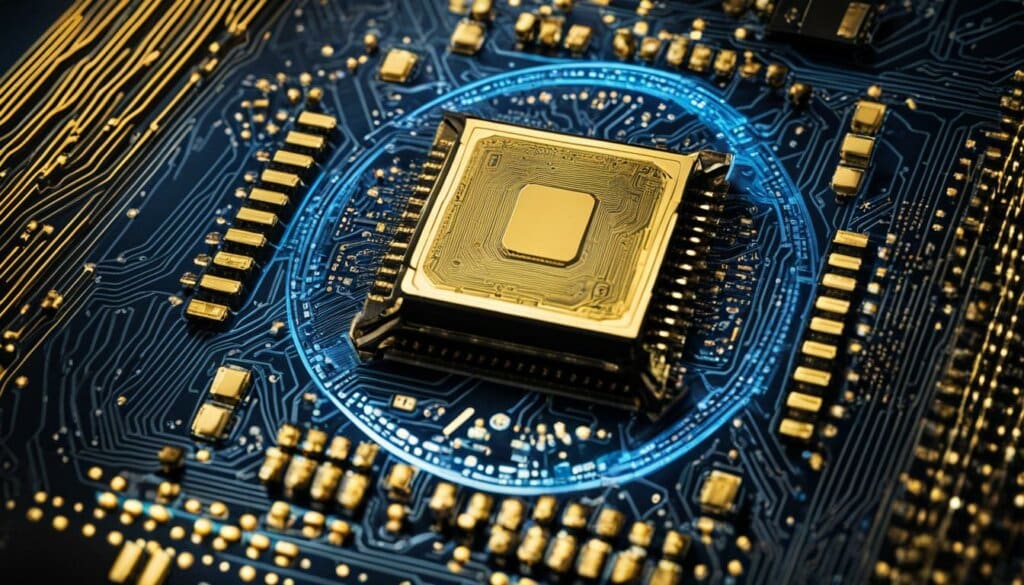
Advancements and Limitations of 64-bit Processors
Over the years, 64-bit processors have seen significant advancements, making them a crucial component of modern computing. These processors now offer faster system clock speeds, hyper-threading, larger internal cache, and advanced instruction sets. They have the ability to handle large and complex software programs efficiently, providing better performance in data movement and offering more detail in data representation.
One of the key advancements of 64-bit processors is their larger addressable memory space. This allows for the execution of resource-intensive tasks such as computer-aided design, database management systems, and scientific applications. Additionally, 64-bit architecture enables the deployment of multiple simultaneous virtual machines and logical virtualization, enhancing overall system capabilities.
However, despite their advancements, 64-bit processors also have limitations to consider. One such limitation is the need for the industry to catch up and fully utilize the potential memory space offered by these processors. While 64-bit architecture provides a larger addressable memory space, the transition from 32-bit to 64-bit environments may result in memory waste if not properly managed. As the industry continues to evolve, optimizing the utilization of 64-bit processors will be crucial to fully harness their capabilities.
| Advancements | Limitations |
|---|---|
| Higher system clock speeds | Industry catch-up |
| Hyper-threading | Potential memory waste |
| Larger internal cache | |
| Advanced instruction sets |
Advancements:
- Faster system clock speeds
- Hyper-threading
- Larger internal cache
- Advanced instruction sets
Limitations:
- Industry catch-up
- Potential memory waste
Conclusion
In conclusion, 64-bit architecture plays a significant role in modern computing by providing increased performance, a larger addressable memory space, and compatibility with both 32-bit and 64-bit applications. It offers advantages such as the ability to handle large and complex software programs, better performance in data movement, and more detail in data representation. However, there are limitations and considerations, such as the need for hardware and software compatibility and the industry’s evolution to fully utilise the capabilities of 64-bit processors. Overall, 64-bit architecture is a crucial component of high-performing systems in today’s computing landscape.
FAQ
What is a 64-bit processor?
A 64-bit processor refers to a microprocessor that can process data and instructions in chunks of 64 bits, allowing for faster system clock speeds and the execution of large and complex software programs.
What are the advantages of 64-bit computing?
64-bit processors offer benefits such as better performance, a larger addressable memory space, and the ability to handle large and complex software programs.
Can 64-bit processors run both 32-bit and 64-bit operating systems?
Yes, 64-bit processors can run both 32-bit and 64-bit operating systems. However, the advanced features and performance of a 64-bit processor may only be fully utilized with a suitable 64-bit operating system.
Why should I choose 64-bit architecture?
64-bit architecture allows for the execution of large and complex software programs, better performance in data movement, and compatibility with both 32-bit and 64-bit applications.
What is the difference between 64-bit and 32-bit architecture?
The main difference is the bus width, with 64-bit processors having a wider bus width. This allows for the handling of more data and instructions per unit of time.
Are 32-bit applications compatible with 64-bit processors?
Most 32-bit applications can function properly on a 64-bit platform, with updates and patches available for compatibility with 64-bit software versions.
What are the advancements and limitations of 64-bit processors?
Advancements include faster system clock speeds, larger internal cache, and advanced instruction sets. Limitations include industry catch-up and potential memory waste.


